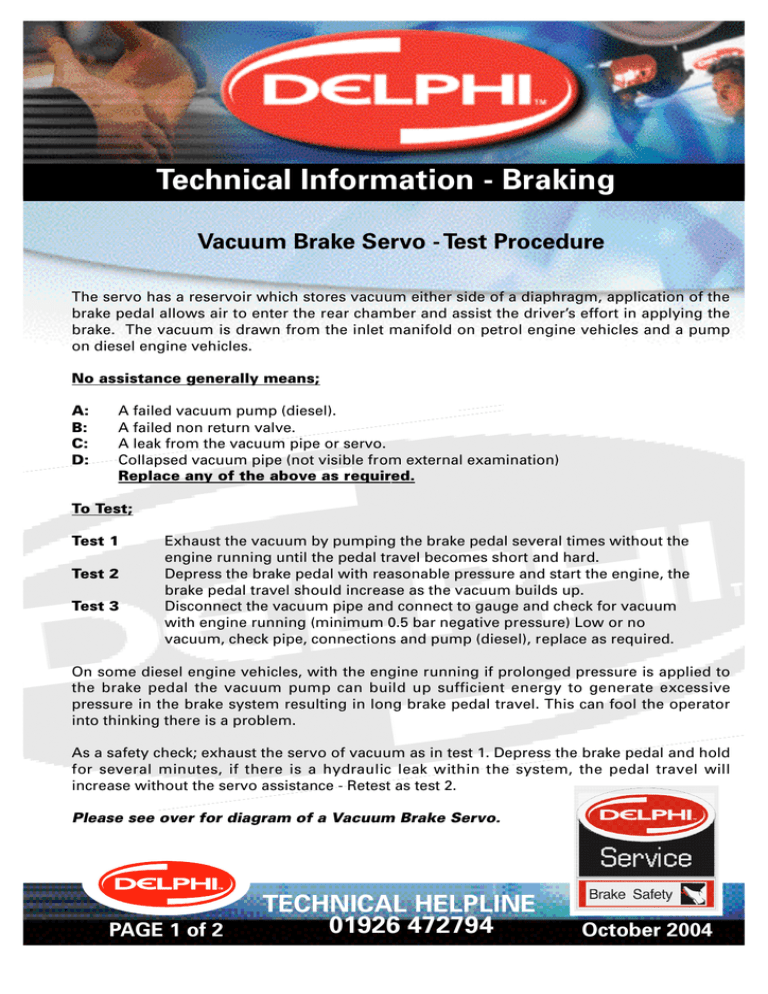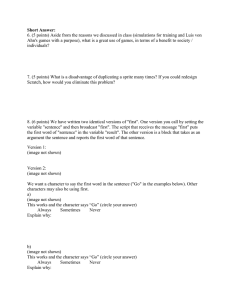oct 04 vacuum brake servo test procedure
advertisement

Technical Information - Braking Vacuum Brake Servo - Test Procedure The servo has a reservoir which stores vacuum either side of a diaphragm, application of the brake pedal allows air to enter the rear chamber and assist the driver’s effort in applying the brake. The vacuum is drawn from the inlet manifold on petrol engine vehicles and a pump on diesel engine vehicles. No assistance generally means; A: B: C: D: A failed vacuum pump (diesel). A failed non return valve. A leak from the vacuum pipe or servo. Collapsed vacuum pipe (not visible from external examination) Replace any of the above as required. To Test; Test 1 Test 2 Test 3 Exhaust the vacuum by pumping the brake pedal several times without the engine running until the pedal travel becomes short and hard. Depress the brake pedal with reasonable pressure and start the engine, the brake pedal travel should increase as the vacuum builds up. Disconnect the vacuum pipe and connect to gauge and check for vacuum with engine running (minimum 0.5 bar negative pressure) Low or no vacuum, check pipe, connections and pump (diesel), replace as required. On some diesel engine vehicles, with the engine running if prolonged pressure is applied to the brake pedal the vacuum pump can build up sufficient energy to generate excessive pressure in the brake system resulting in long brake pedal travel. This can fool the operator into thinking there is a problem. As a safety check; exhaust the servo of vacuum as in test 1. Depress the brake pedal and hold for several minutes, if there is a hydraulic leak within the system, the pedal travel will increase without the servo assistance - Retest as test 2. Please see over for diagram of a Vacuum Brake Servo. PAGE PAGE 1 1 of of 2 2 TECHNICALHELPLINE HELPLINE TECHNICAL 01926 01926472794 472794 October October 2004 2004 Technical Information - Braking Vacuum Brake Servo - Diagram PAGE 2 of 2 TECHNICAL HELPLINE 01926 472794 October 2004

